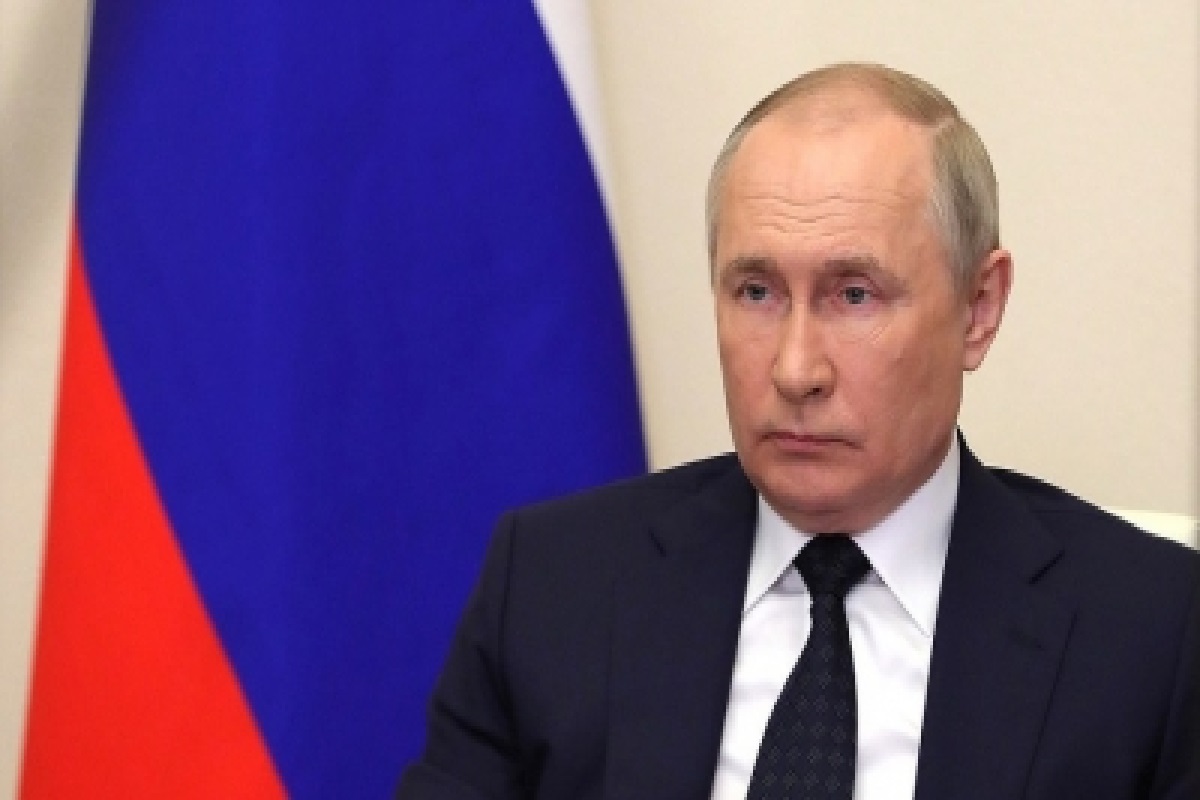Putin, Trump may meet before end of February: Kremlin
Russian President Vladimir Putin and US President Donald Trump could meet as early as this month, Kremlin Spokesman Dmitry Peskov said Wednesday.
Fifty years ago today, a South Vietnamese photographer employed by the Associated Press (AP) snapped a scene that helped to shift perceptions of the American crusade in Indochina, not least within the United States.

[Photo: IANS]
Fifty years ago today, a South Vietnamese photographer employed by the Associated Press (AP) snapped a scene that helped to shift perceptions of the American crusade in Indochina, not least within the United States.
At the centre of the photograph is a screaming child who had torn off her burning clothes and was screaming “Nong qua!” (Too hot!) as she ran down the street, the scars already visible on her skin.
Advertisement
Minutes earlier, their South Vietnamese allies had directed a US air strike at a group of buildings in Trang Bang, a village not far from Saigon. The bombers dropped napalm, by then a staple of American chemical warfare in the nation’s mission to keep the world safe from communism.
Advertisement
As the photographer, Nick Ut, recalls in a contribution to The Washington Post last week, he poured water on the child, which only exacerbated her agony, then grabbed all the wounded children he could spot and drove them to the hospital in an AP van. Throughout the journey, the nine-year-old kept screaming “I’m dying”.
She survived, with “third-degree burns on 30 per cent of her body”. In an essay published in The New York Times recently, Kim Phuc writes: “Nick Ut changed my life forever with that remarkable photograph. But he also saved my life.” Yet she also recalls “hating him at times. I grew up detesting that photo.”
However, she is “grateful now for the power of that photograph … That picture will always serve as a reminder of the unspeakable evil of which humanity is still capable”. Liv- ing in Canada since the late 1980s, Kim Phuc has devoted part of her life to aiding child victims of war across the world.
She and Ut remain in touch, inextricably bound by one particularly horrific moment in time. Both their comments reflect on the terrors being witnessed in Ukraine, and Kim Phuc also refers to the massacre of children in Uvalde, Texas.
There has been a peripheral debate in the US over whether dis- playing the aftermath of outrages such as Uvalde might help to change the minds of those who insist that owning weapons such as AR-15s — popular among the mass murderers deployed in Vietnam decades ago — is a God-given right.
An opinion poll this week suggested that roughly half of US Republicans consider mass shootings an acceptable price to pay for the unrestricted right to own lethal weapons. But then, ‘Thou shalt not kill’ has never been taken seriously as a commandment across the Bible Belt.
Another searing artistic reminder of the war in Vietnam arrived last month with the Kronos Quartet’s recording of My Lai, a 21st- century opera that had hitherto been inaccessible to those of us unable to witness its critically appreciated stagings since 2016.
It tells the story, in an incredibly powerful libretto by Harriet Scott Chessman, of helicopter pilot Hugh Thompson, stricken with terminal cancer, recalling from his deathbed in 2005 the events that propelled him to notoriety among his employers in March 1968.
Flying in South Vietnam on a reconnaissance mission on March 16, the 25-year-old Thomson and his two companions witnessed a massacre in operation in a hamlet where no “enemy” forces had been spotted. He saw women and children being slaughtered without remorse. The perpetrators were his military comrades.
Thomson landed his helicopter three times in his attempt to halt what he could see was going on. At one point, he ordered the two men under his command to shoot at fellow Americans if they tried to shoot the bunch of civilians sheltering from the trigger-happy enemy.
Thompson managed to save a few lives. But more than 500 children, women and old men were massacred. Just for the crime of being Vietnamese. At least 200 of the victims were under the age of 12. There are instances of infants being shot while trying to crawl to safety. Teenage girls and young women were raped before they were killed.
“They were animals,” Rinde Eckert, voicing the anguish Thompson, sings in the opera. Then he adds: “No! Animals wouldn’t do that.” They got off with barely a knuckle-rap.
I recall being shocked as a kid by the photographs by Ron Haeberle that appeared in Life magazine. Much later I learnt about how Seymour Hersh had tracked down and eventually revealed some of the details of what happened at My Lai.
Recalling all this puts into perspective the allegation of war crimes being hurled against Vladimir Putin, while Tony Blair is feted as a knight of the realm and George W. Bush is at worst treated like an errant elder statesman, while Richard Nixon’s chief adviser, Henry Kissinger, is invited to elaborate on current affairs with no reflection on his deadly past.
The blood on Putin’s hands merely places him in a long line of recent mass murderers, many of them Americans.
Advertisement